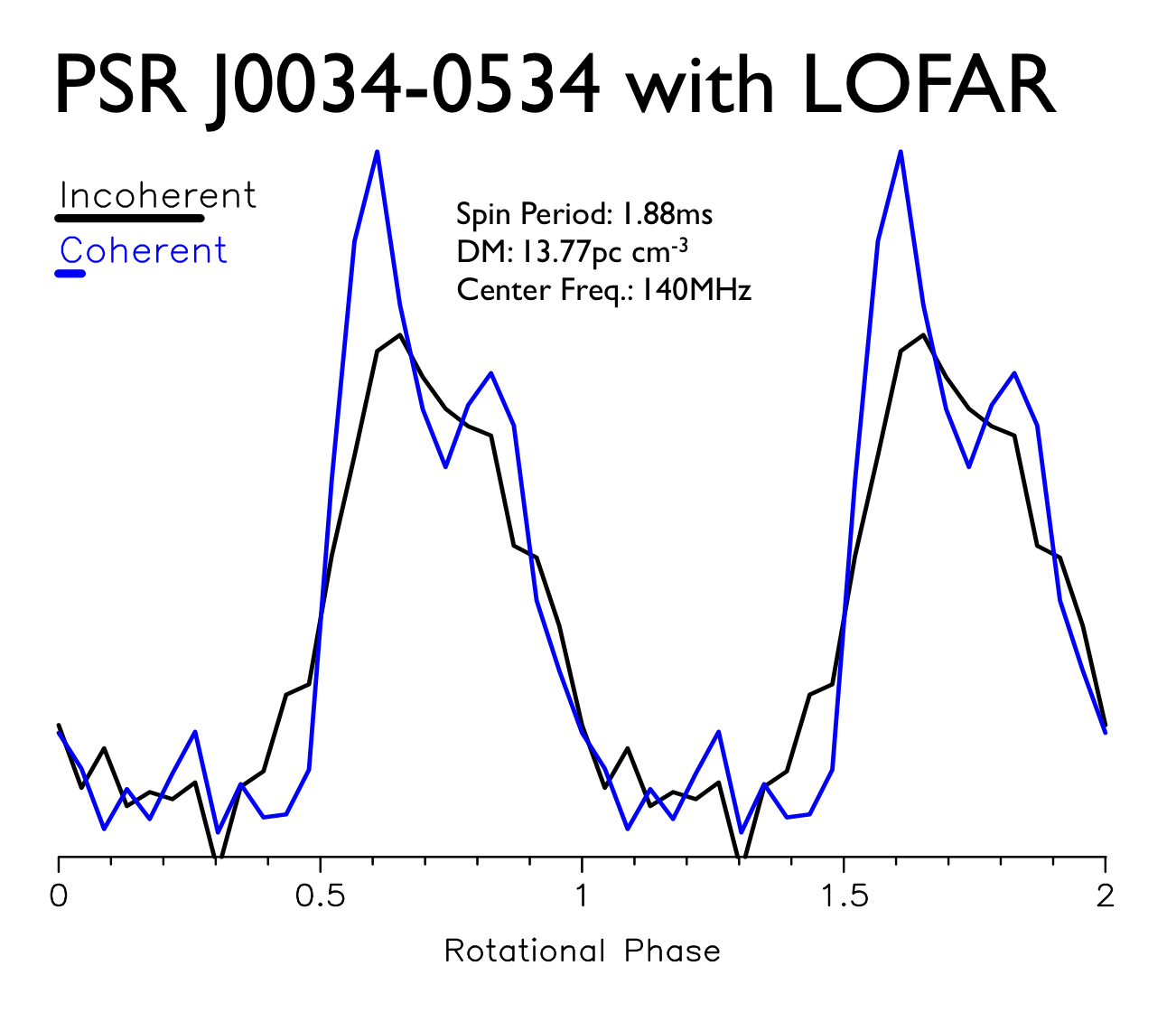Daily Image
02-02-2011First Light Online Coherent Dedispersion with LOFAR
| Submitter: | Jason Hessels, John Romein, Jan David Mol, LOFAR PWG |
| Description: | Observing millisecond pulsars at low radio frequencies is especially challenging because of dispersion - i.e. the frequency dependent arrival time of the pulsar signal, which must pass through the ionized interstellar medium. Up until now, we have corrected for dispersion only by shifting the LOFAR frequency channels in time by an amount proportional to the dispersion measure. This method, known as "incoherent dedispersion" is limited by the residual dispersive smearing within the finite bandwidth of the frequency channels. This is particularly relevant at the lowest radio frequencies and for those sources with the shortest pulse widths. In fact, many millisecond pulsars will only be detectable with LOFAR if we can correct for dispersive smearing within the spectral channels. Recently we have achieved the first light for online "coherent dedispersion". In this method, a frequency dependent filter is applied by the BG/P correlator to the raw complex voltages in order to invert the effect of dispersion within the spectral channels. This gives much better effective time resolution for resolving the sharp features of millisecond pulsars, as demonstrated in this detection of the 1.88-ms pulsar J0034-0534. For comparison, two observations are shown: one in which only incoherent dedispersion is applied and one in which coherent dedispersion was also applied online. The width of the corresponding legend bars show the resulting time resolution, which is 6 times better for the data that is coherently dedispersed. The profiles have been scaled so that the off-pulse noise is the same. The intrinsic double peaked morphology of the profile is only apparent when coherent dedispersion is applied, and the peak signal-to-noise ratio increases significantly. Having this method available finally allows LOFAR to properly observe millisecond pulsars and opens a wealth of new scientific opportunities! |
| Copyright: | ASTRON |
| Tweet |  |
